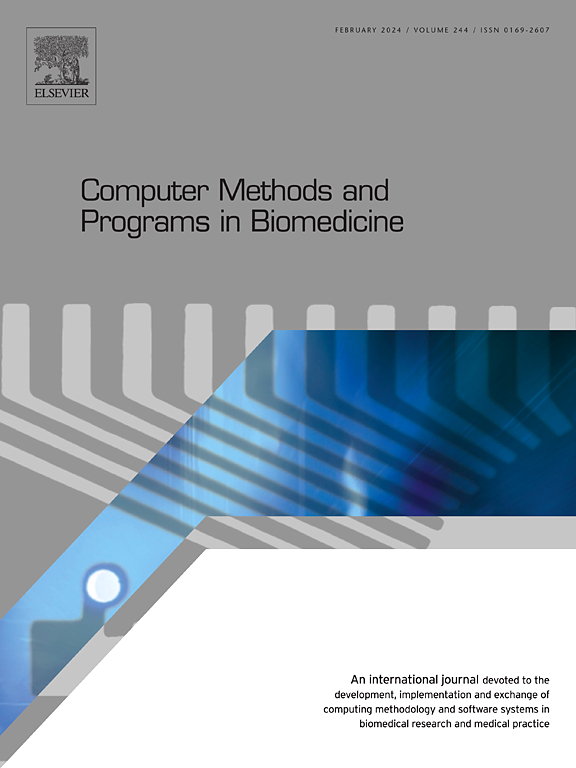Using machine learning models for predicting monthly iPTH levels in hemodialysis patients
IF 4.9
2区 医学
Q1 COMPUTER SCIENCE, INTERDISCIPLINARY APPLICATIONS
引用次数: 0
Abstract
Background and Objective: Intact parathyroid hormone (iPTH), also known as active parathyroid hormone, is an important indicator commonly for monitoring secondary hyperparathyroidism (SHPT) in patients undergoing hemodialysis. The aim of this study was to use machine learning (ML) models to predict monthly iPTH levels in patients undergoing hemodialysis.
Methods: We conducted a retrospective study on patients undergoing regular hemodialysis. Patients’ blood examinations data was collected from Taiwan Society of Nephrology – Kidney Dialysis, Transplantation (TSN-KiDiT) registration system, and patients’ medications data was collected from Pingtung Christian Hospital (PTCH), Taiwan. We used five different ML models to classify patients into three distinct categories based on their iPTH levels: iPTH < 150, iPTH ≥ 150 & iPTH < 600, and iPTH ≥ 600(pg/ml).
Results: We ultimately included 1,351 patients in our study and processed the data in four different ways. These methods varied based on the duration of the data (either using data from just one month or continuously over three months) and the number of features used (either all 52 features or only 20 most important features identified by SHapley Additive exPlanations (SHAP) analysis). The XGBoost model, using data from a continuous three-month period and all available features, yielded the best Weighted AUROC (0.922).
Conclusions: ML is highly effective in predicting iPTH levels in hemodialysis patients, notably accurate for those with iPTH over 600 pg/ml. This method enables early identification of high-risk patients, reducing reliance on retrospective blood test assessments. Future research should focus on advancing explainable AI methods to foster clinicians' trust, and developing adaptable ML frameworks that could seamlessly integrate with existing healthcare systems.
使用机器学习模型预测血液透析患者每月iPTH水平。
背景与目的:完整甲状旁腺激素(iPTH)又称活性甲状旁腺激素,是监测血液透析患者继发性甲状旁腺功能亢进(SHPT)的常用重要指标。本研究的目的是使用机器学习(ML)模型预测血液透析患者每月iPTH水平。方法:对定期进行血液透析的患者进行回顾性研究。我们使用五种不同的ML模型,根据iPTH水平将患者分为三种不同的类别:iPTH < 150, iPTH≥150 & iPTH < 600, iPTH≥600(pg/ ML)。结果:我们最终纳入了1351名患者,并以四种不同的方式处理了数据。这些方法根据数据的持续时间(要么使用仅一个月的数据,要么连续使用超过三个月的数据)和使用的特征数量(要么全部52个特征,要么只有20个最重要的特征由SHapley加性解释(SHAP)分析确定)而变化。使用连续三个月的数据和所有可用特征的XGBoost模型产生了最佳加权AUROC(0.922)。结论:ML在预测血液透析患者iPTH水平方面非常有效,对于iPTH超过600 pg/ ML的患者尤其准确。这种方法能够早期识别高风险患者,减少对回顾性血液检查评估的依赖。未来的研究应侧重于推进可解释的人工智能方法,以培养临床医生的信任,并开发可与现有医疗系统无缝集成的适应性机器学习框架。
本文章由计算机程序翻译,如有差异,请以英文原文为准。
求助全文
约1分钟内获得全文
求助全文
来源期刊

Computer methods and programs in biomedicine
工程技术-工程:生物医学
CiteScore
12.30
自引率
6.60%
发文量
601
审稿时长
135 days
期刊介绍:
To encourage the development of formal computing methods, and their application in biomedical research and medical practice, by illustration of fundamental principles in biomedical informatics research; to stimulate basic research into application software design; to report the state of research of biomedical information processing projects; to report new computer methodologies applied in biomedical areas; the eventual distribution of demonstrable software to avoid duplication of effort; to provide a forum for discussion and improvement of existing software; to optimize contact between national organizations and regional user groups by promoting an international exchange of information on formal methods, standards and software in biomedicine.
Computer Methods and Programs in Biomedicine covers computing methodology and software systems derived from computing science for implementation in all aspects of biomedical research and medical practice. It is designed to serve: biochemists; biologists; geneticists; immunologists; neuroscientists; pharmacologists; toxicologists; clinicians; epidemiologists; psychiatrists; psychologists; cardiologists; chemists; (radio)physicists; computer scientists; programmers and systems analysts; biomedical, clinical, electrical and other engineers; teachers of medical informatics and users of educational software.
 求助内容:
求助内容: 应助结果提醒方式:
应助结果提醒方式:


